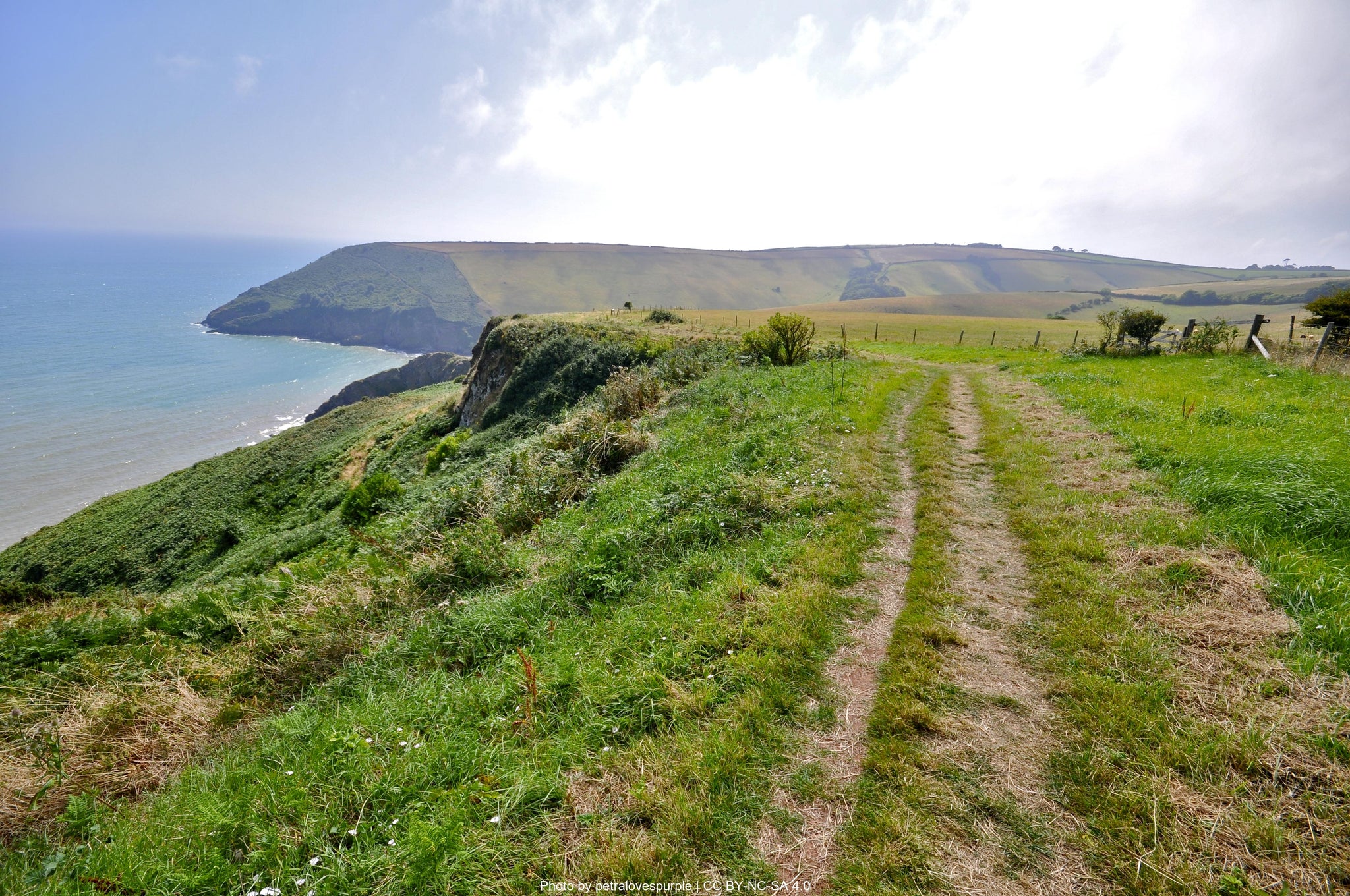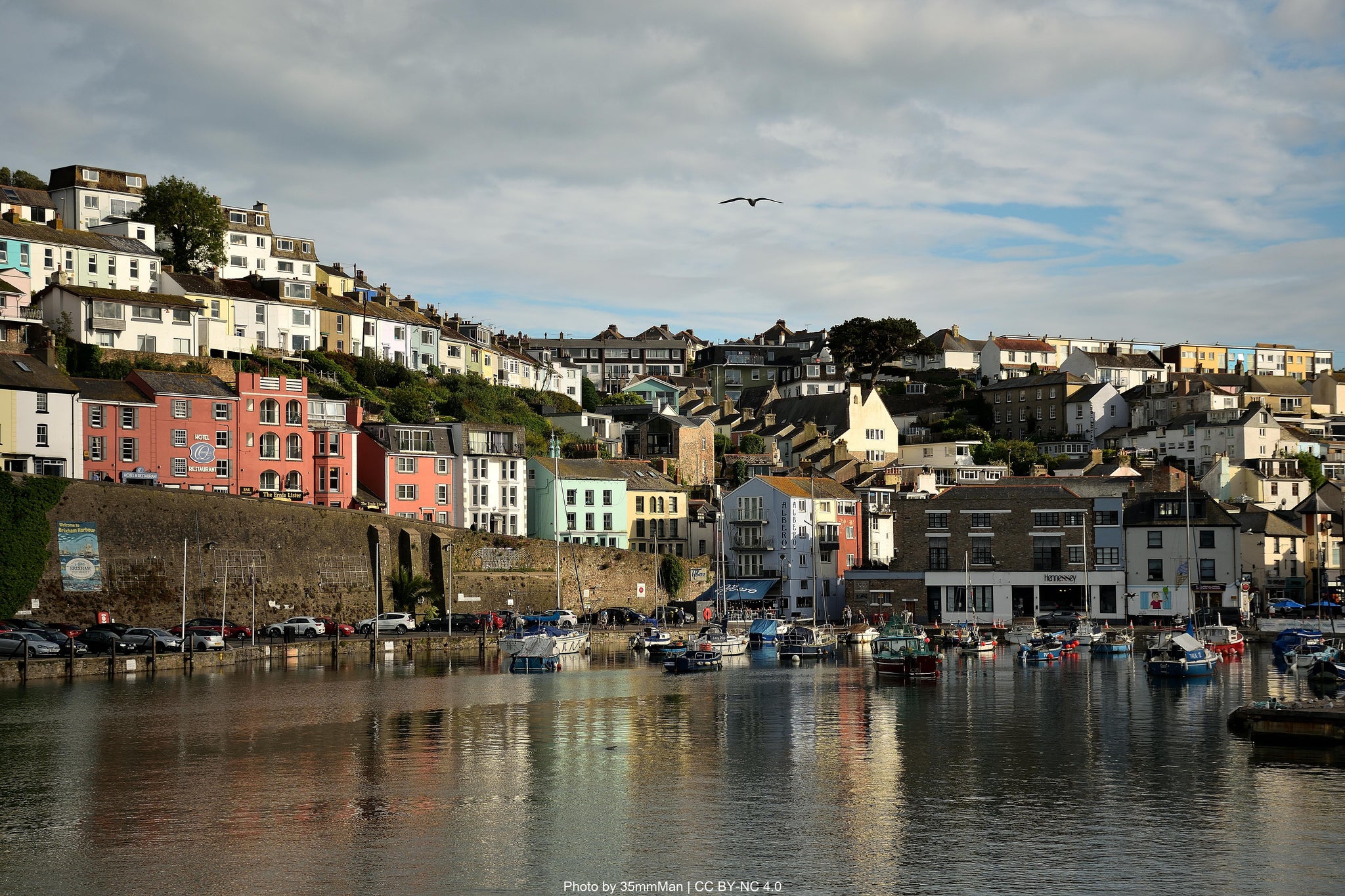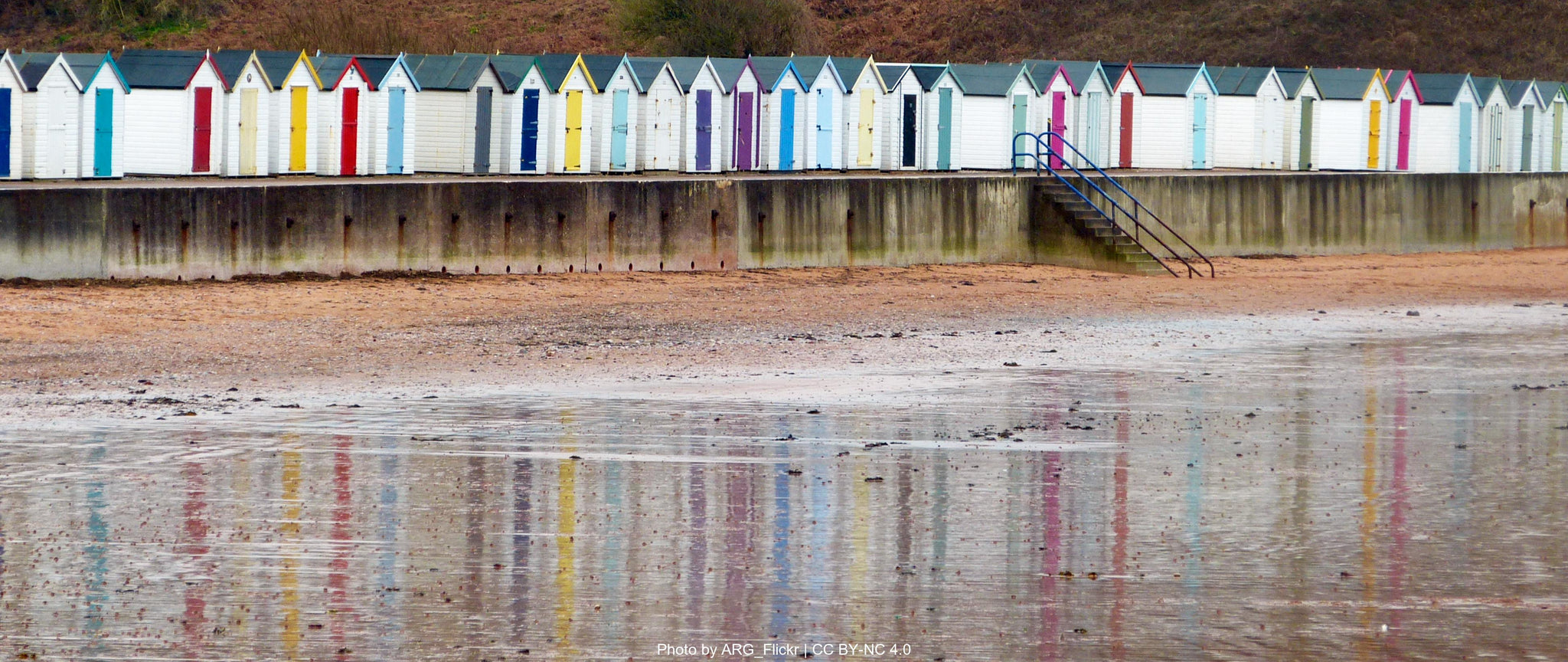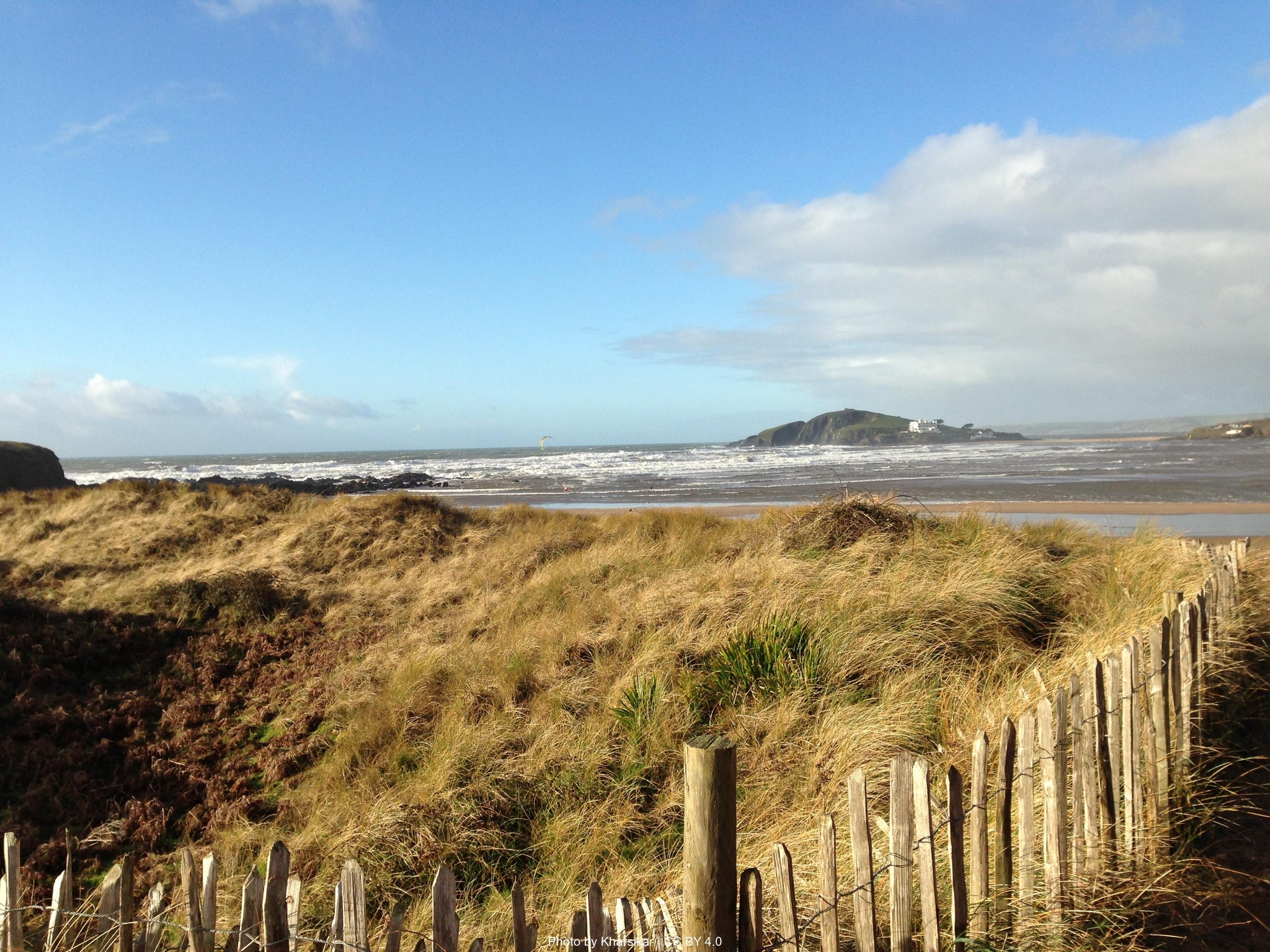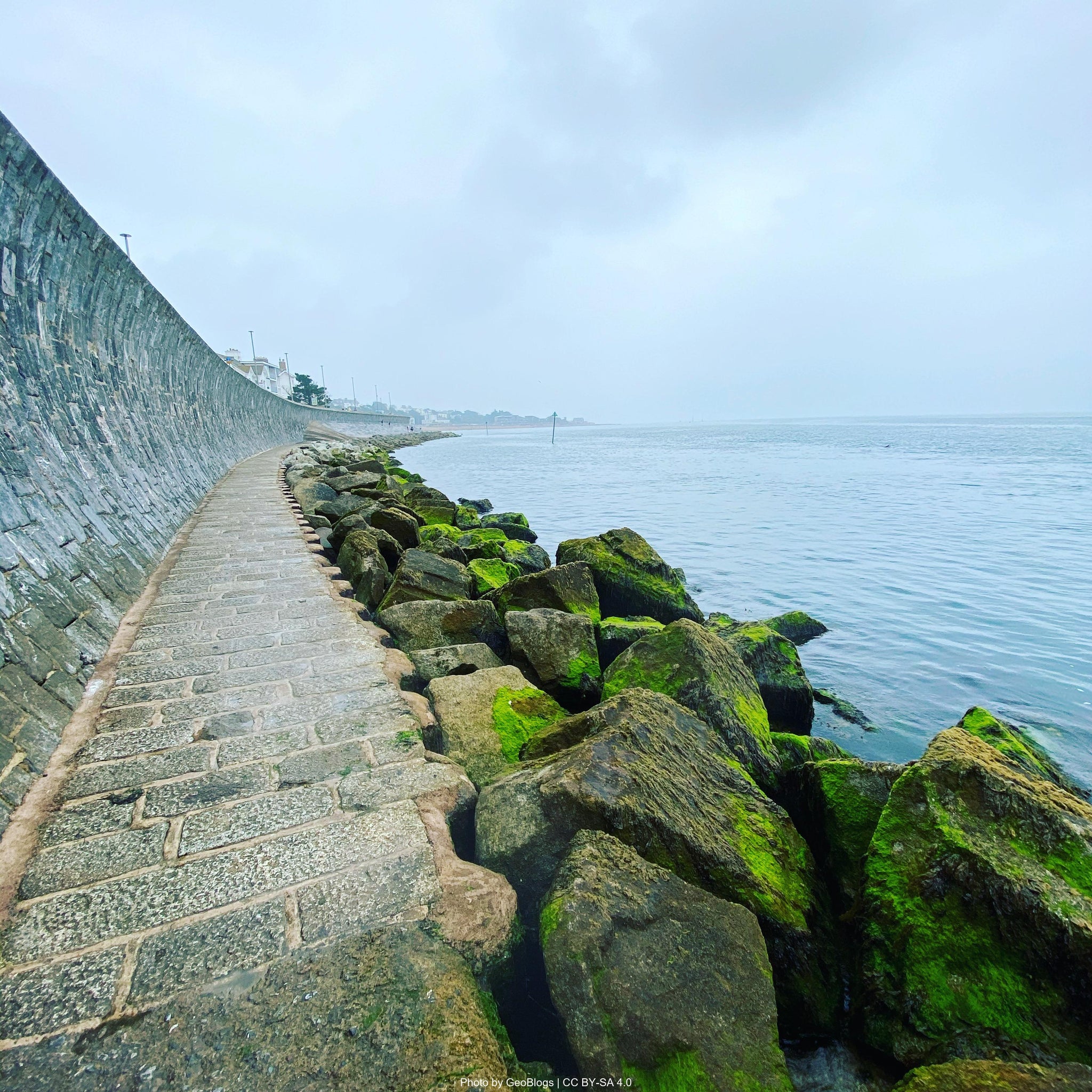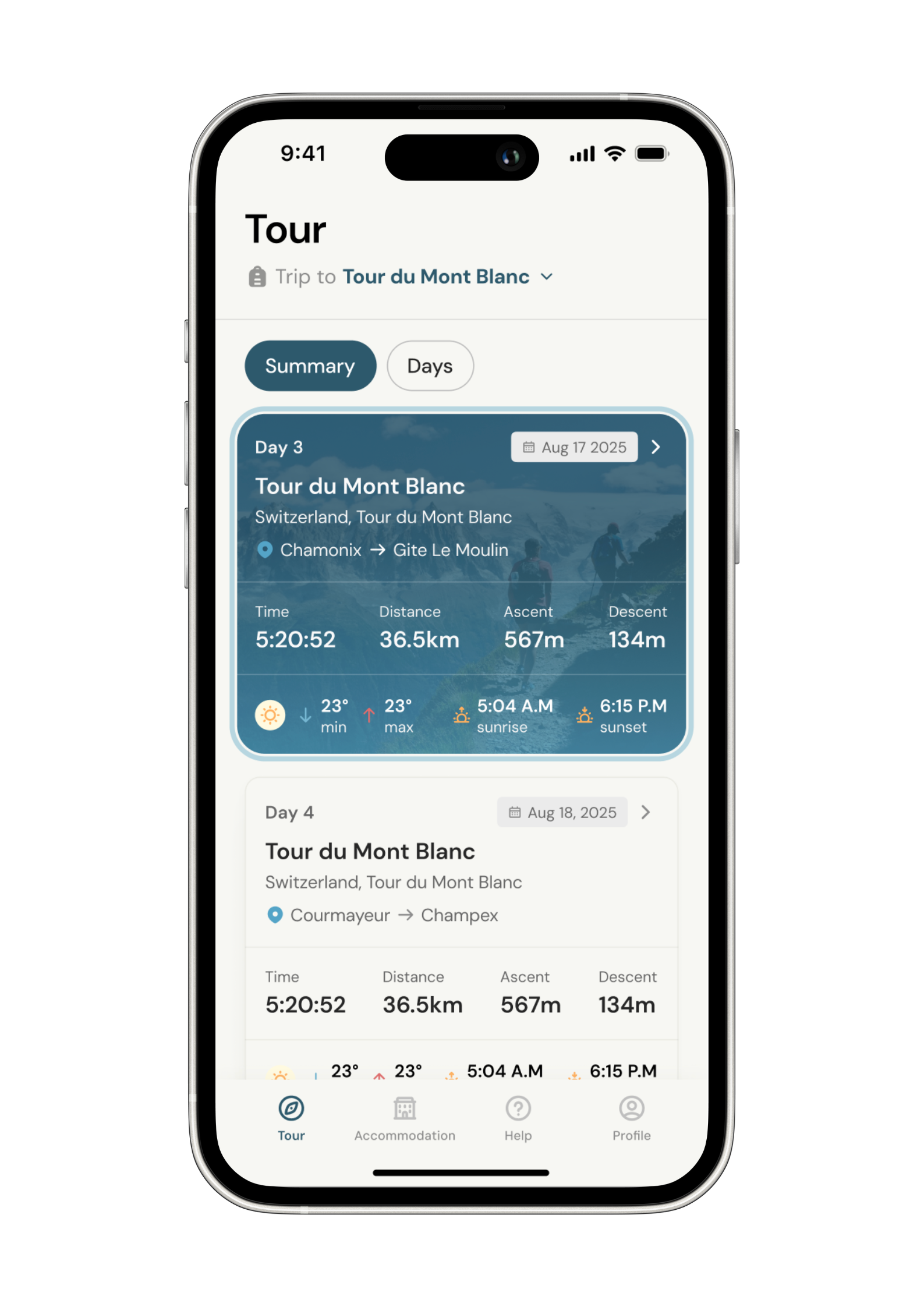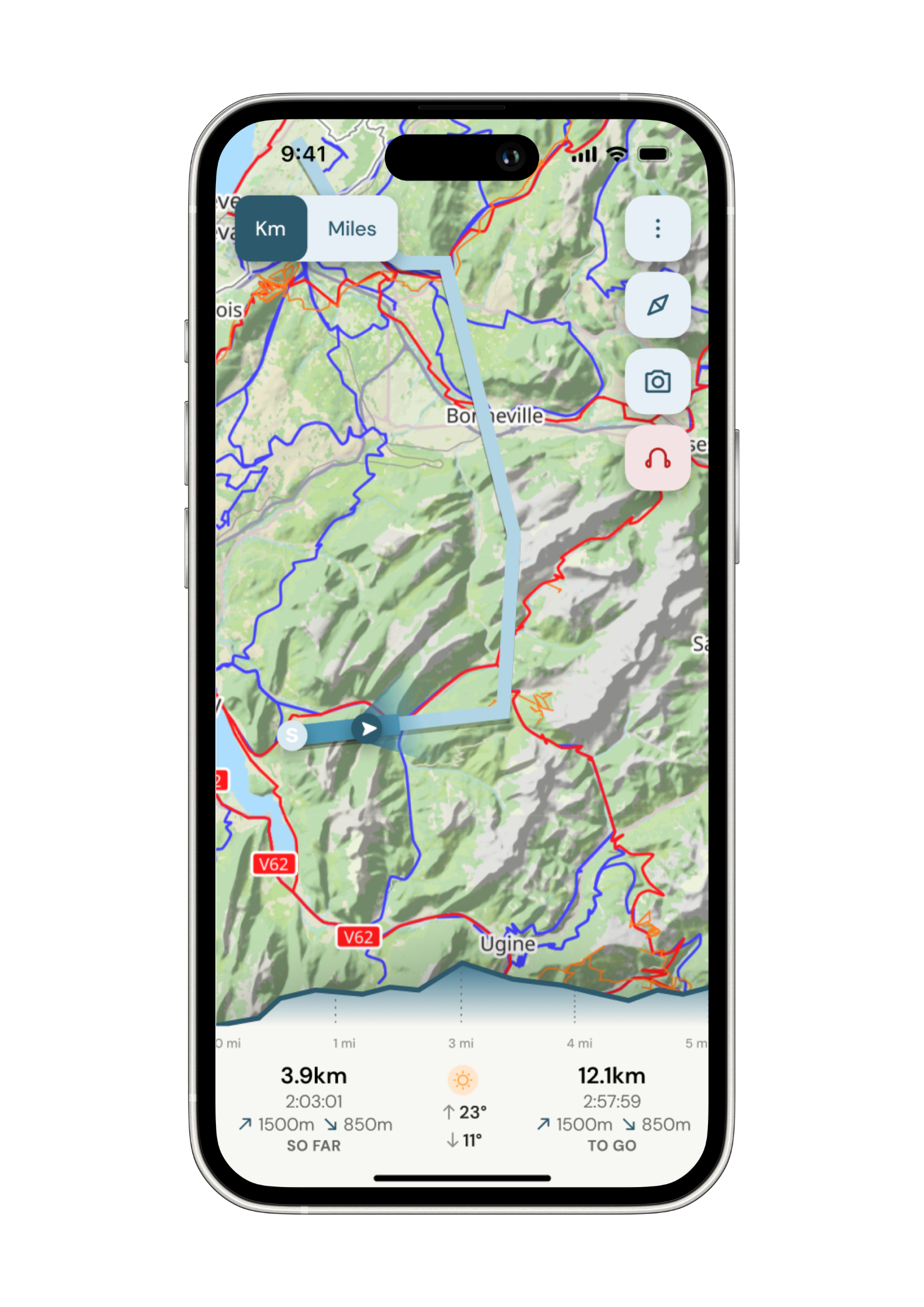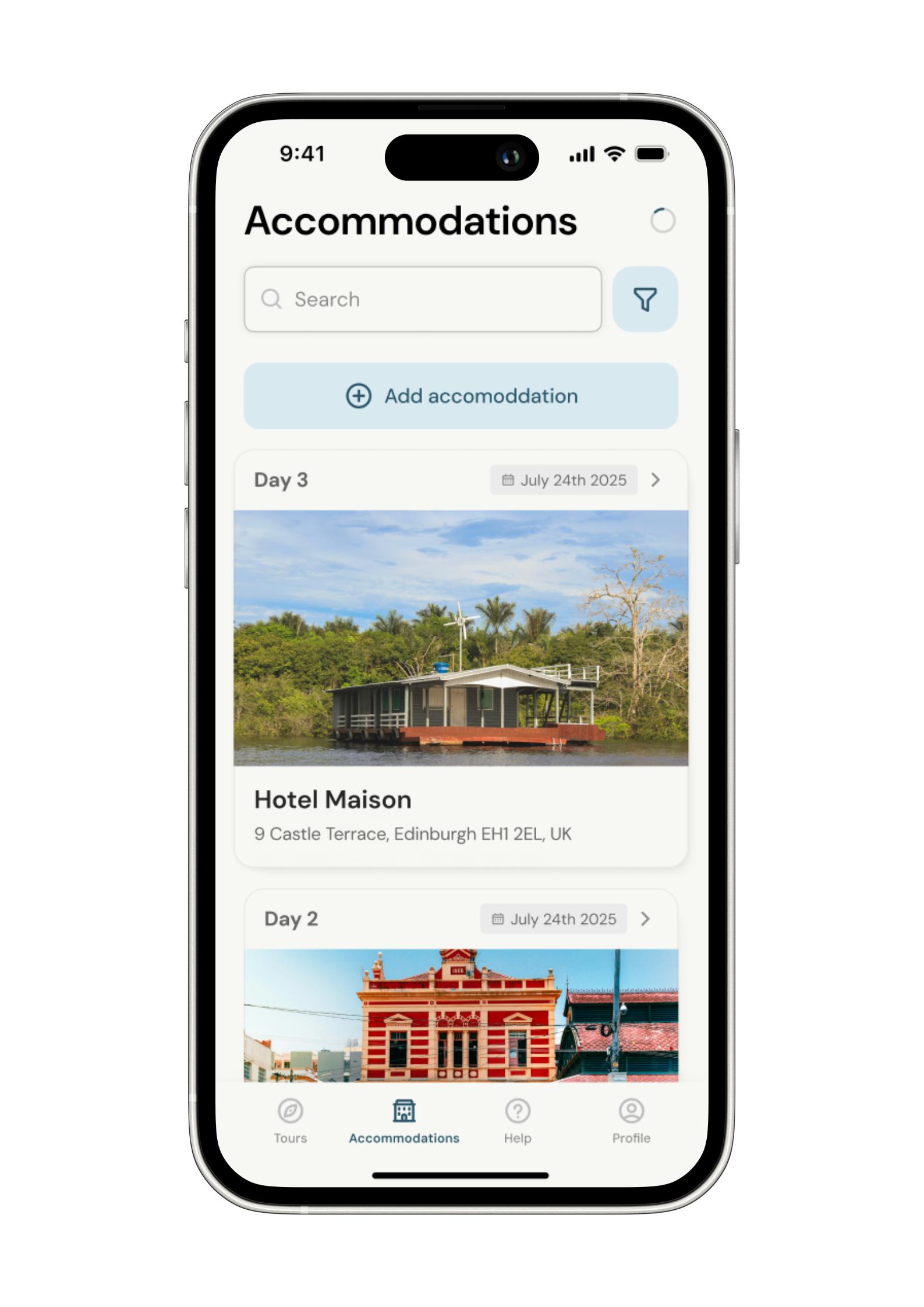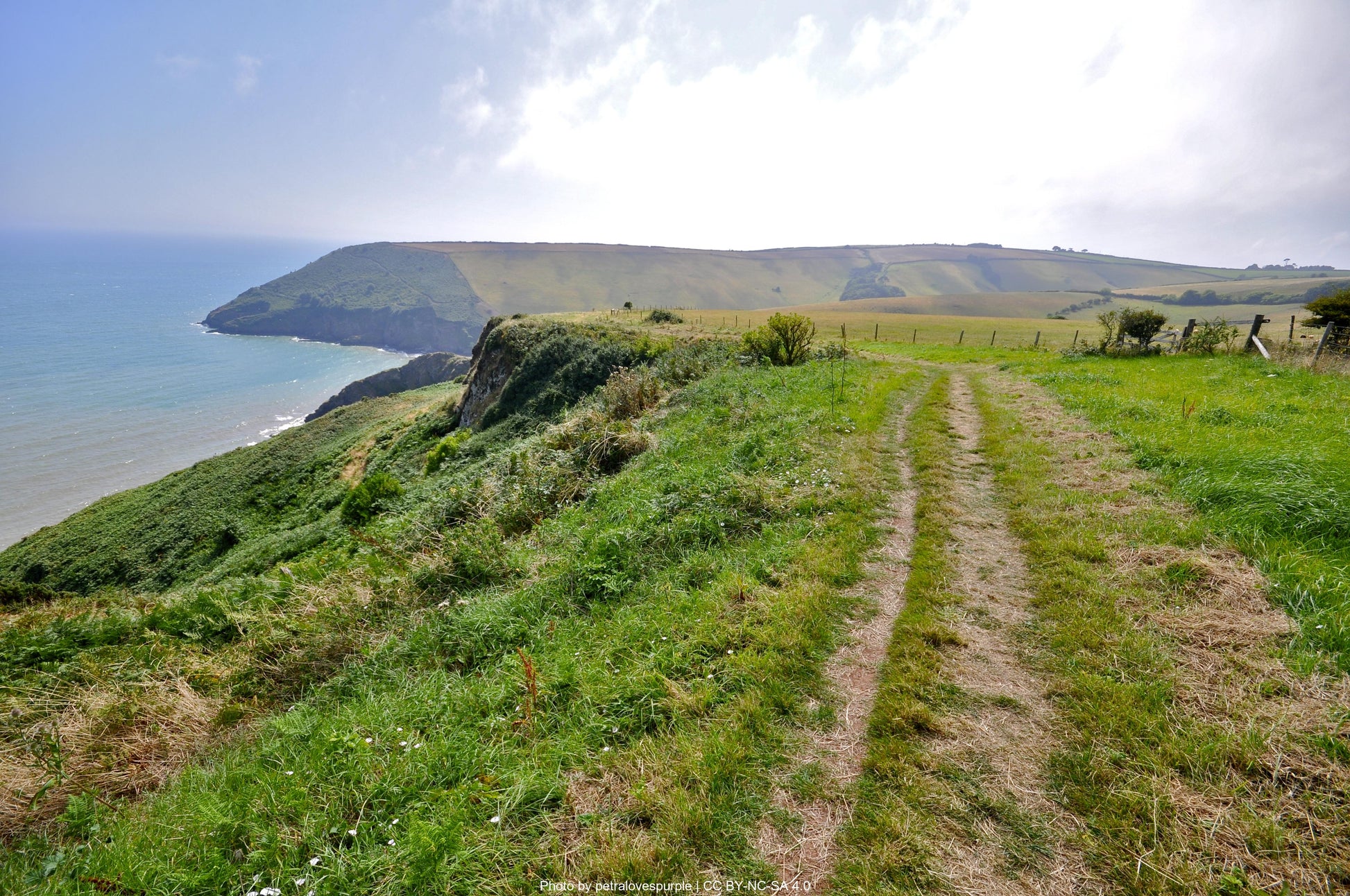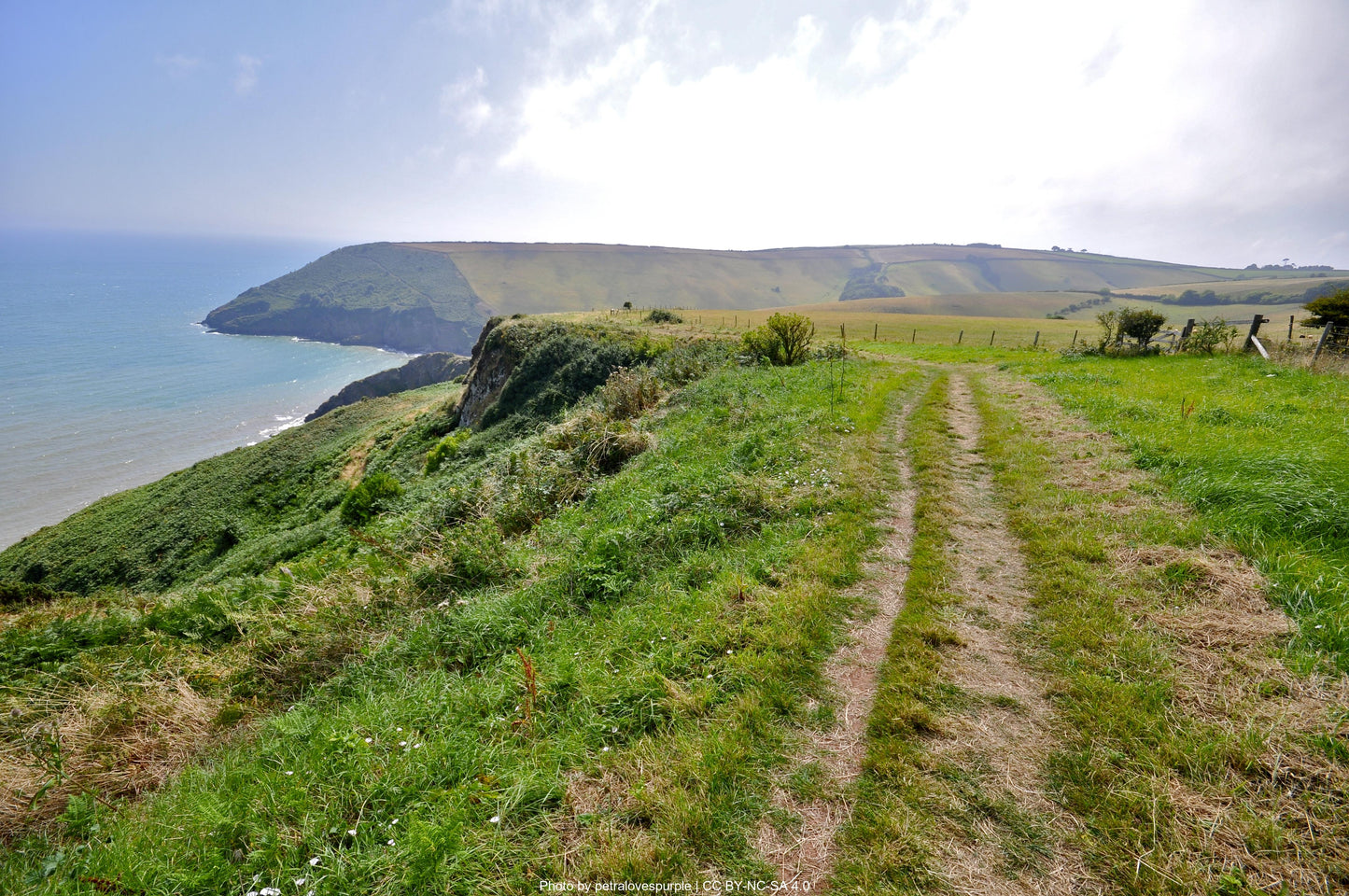South West Coast Path: Plymouth to Exmouth Overview
- England's highest coastal cliffs above churning seas
- Red cliffs, beaches, valleys, gentle climbs
- Start Point's exposed and dramatic headland
The Plymouth to Exmouth section spans 169 kilometers through Devon's most spectacular and challenging coastal terrain, offering hikers one of England's most remote and physically demanding coastal experiences. This renowned route traverses the dramatic South Devon Area of Outstanding Natural Beau... Read more
| Hilliness | |
| Start Point | Plymouth, Devon |
| End Point | Exmouth, Devon |
| Activity Type | Walking, Hiking, Trail Running |
| Distance | 166km | 103 miles |
| Ascent | 3,217m | loss 3,217m |
| When to go | May to October |
| Baggage Transfer | Available |
Custom Adventure Plan: £119.00
Book NowWhat's included?
-
Custom Adventure Plan
-
Accommodation options for you
-
Door‑to‑door GPX in our app
-
On‑trail support
-
Share with up to four people
What to Expect
Starting at Plymouth's Mayflower Steps, walkers can take the Mount Batten Ferry (year-round, every 30 minutes) to bypass urban streets, or follow the complete route through industrial areas and across Laira Bridge. The path climbs through Turnchapel to dramatic coastline at Mount Batten Point, continuing to Jennycliff Bay and Staddon Heights with sweeping views. Fort Bovisand, a Victorian "Palmerston Folly," marks the transition to rugged clifftop walking. Heybrook Bay offers the Eddystone Inn for refreshments before reaching Wembury Beach with its seasonal Old Mill Cafe.
The route follows easy clifftop paths along Victorian Revelstoke Drive to Warren Point, where a seasonal ferry (April-September) crosses the Yealm estuary to picturesque Noss Mayo.
From Noss Mayo, the path climbs gently away from the village, through Brakehill Plantation, then onto the dramatic headland at Gara Point, giving panoramic views. The route now follows the renowned Revelstoke Drive, a Victorian carriage road built by fishermen for Lord Revelstoke in the 19th century.
After passing through The Warren National Trust protected area, numerous rocky coves can be seen below the clifftop path. This section contains the the challenging River Erme crossing - passable only within one hour either side of low tide. The 12km road detour via Mothecombe is required otherwise.
Beyond the Erme, the terrain becomes increasingly challenging with clifftops reaching 300 feet before dropping into Bigbury-on-Sea.
After Bigbury-on-Sea Bantham is accessible via seasonal ferry. The spectacular section has some spectacular clifftop walking, offering panoramic views. It includes Bolt Tail, the site of an Iron Age fort, concrete remains of RAF runways and around Bolt Head features the famous Courtney Walk carved from cliff face, leading to Salcombe's historic harbor.
The essential Salcombe-East Portlemouth ferry operates year-round. The route tackles one of the coast path's most demanding sections, climbing high cliffs to Prawle Point (Devon's southernmost point) with its National Coastwatch station. After passing Start Point lighthouse and the ruins of storm-destroyed Hallsands village, the path reaches Beesands fishing village and the Cricket Inn.
Continuing north along shingle beaches, Torcross features the Sherman Tank Memorial and Start Bay Inn's renowned fish and chips. The unique landscape around Slapton Ley (England's largest natural freshwater lake) offers wildlife viewing before climbing to Strete and passing above famous Blackpool Sands. Stoke Fleming provides refreshments before the final approach to Dartmouth Castle and the historic harbor.
Two ferry services cross the River Dart to Kingswear. The path climbs through woodland past Kingswear Castle to Froward Point's WWII remains and distinctive Daymark tower. Berry Head National Nature Reserve features Britain's shortest lighthouse and Napoleonic forts, plus the Guardhouse Café. The largest guillemot colony on England's south coast nests here. The path then descends into Brixham, a historic fishing port.
From Brixham harbor, the route passes through ancient Grove woodland to hidden Elberry Cove, continuing along beaches to Paignton and Torquay's harbor. Dramatic limestone features include Daddyhole Plain and London Bridge arch before reaching Hope's Nose and Anstey's Cove. The path climbs steeply through woodland over Babbacombe Downs to reach Babbacombe.
The final section traverses woodland above Watcombe and Maidencombe beaches, with The Thatched Tavern providing refreshments. At Shaldon, England's oldest ferry service (dating to 1296) crosses the River Teign. The route follows the famous South Devon Railway sea wall through red sandstone cliffs to Dawlish, continuing along the Exe Estuary Trail through Starcross to the essential Starcross-Exmouth ferry (April-October).
How long will it take?
Everyone has a different approach to trails. Here are our suggested times for the South West Coast Path Stage 5: Plymouth to Exmouth for different types of adventurers.
Here we have assumed that you will be out on the trail for around 8 hours per day, including regular breaks but not extended lunch stops.

8
Days
For walkers who love the journey as much as the destination.
You enjoy full days on the trail, moving steadily, soaking up the scenery — with plenty of time for food and drink stops along the way!

7
Days
For long-distance walkers who enjoy the challenge of a steady pace over varied terrain.
You’ve got the fitness to cover strong distances over several days — this is where most keen hikers will find themselves.

5
Days
The first of our faster categories — built for those who prioritise pace.
You move quickly with minimal stops, carry just the essentials, and have the fitness to handle long days and tough terrain.

4
Days
Our fastest pace – ideal for those used to ultramarathons.
You mix fast hiking with running on flats and descents, even over mountains. Speed and efficiency matter most, with minimal stops as you aim to complete each route as quickly as possible.
Essential Travel Information
Best hiking season: May through September provides optimal conditions, with May-June and September offering the best balance of good weather and manageable crowds. The coastal location moderates temperature extremes, but exposes walkers to Atlantic weather systems and strong winds.
Weather patterns and challenges: The southwest coast experiences a maritime climate with mild winters and moderate summers. Rainfall occurs throughout the year but is heaviest from October through March. Sea mists can develop rapidly, particularly in early morning and evening hours. Wind exposure is significant on clifftop sections, with prevailing southwesterly winds often creating challenging conditions.
Seasonal hazards include:
- Spring: Muddy paths after winter rain, unpredictable weather, limited daylight hours in early season
- Summer: Extreme heat on exposed clifftops, overcrowding at popular viewpoints, higher risk of dehydration
- Autumn: Shorter daylight hours, increasing storm frequency, wet and slippery rock surfaces
- Winter: Severe weather exposure, limited accommodation and transport, dangerous conditions on clifftop sections
Timing of facilities/refuge openings: Most coastal accommodations, cafes, and visitor facilities operate fully from Easter through October. Many establishments in remote coastal locations close completely from November through February, with reduced hours during shoulder seasons. Transport links, particularly rural bus services, operate on reduced winter timetables.
The South West Coast Path offers exceptional accommodation variety along its 630-mile length:
B&Bs/Guesthouses: £80-150 per night (double room), representing the most common and reliable option. Walker-friendly establishments typically offer packed lunch services, drying facilities, and early breakfast options.
Hotels: £120-300+ per night, available in larger coastal towns and cities including St Ives, Falmouth, Dartmouth, and Bath. Prices range from less than £10 for a camping pitch, to £300+ for a high end spa hotel.
Hostels: £18-40 per night (dormitory bed), strategically located at key points including Beer, Hartland, Tintagel, Land's End, and Exmouth. YHA properties offer excellent walker facilities and represent outstanding value.
Bunkhouses/Hostels: £25-45 per night, basic but clean dormitory-style accommodation popular with budget-conscious walkers and groups.
Camping: £10-25 per night at designated sites, with excellent coastal campsites throughout the route. Wild camping is not permitted along most of the path due to National Trust and private land ownership.
Booking requirements and timing: Advance booking is absolutely essential during peak season (June-September), particularly for weekend dates and in smaller coastal villages with limited options like Clovelly, Boscastle, and Port Isaac. Book at least 4-6 months ahead for summer trips, with some popular establishments filling up to a year in advance.
Popular stopover points: Key overnight locations include Minehead, Lynmouth, Clovelly, Bude, Tintagel, Port Isaac, Padstow, St Ives, Penzance, Falmouth, Fowey, Polperro, Plymouth, Salcombe, Dartmouth, Torbay, Sidmouth, Lyme Regis, Weymouth, and Poole.
Nearest airports/major cities:
- Exeter Airport (45 minutes to Exmouth, 1 hour to Plymouth)
- Plymouth Airport (local, limited services)
- Major cities: Plymouth (start point), Exeter (20 minutes to Exmouth)
Public transportation options:
- Plymouth: Major rail hub with direct services nationwide
- Exmouth: Branch railway from Exeter (frequent services)
- Regular bus services connect most coastal villages
- Dartmouth: Bus connections to Totnes (rail) and Paignton
Trailhead access:
- Plymouth: Start from Barbican or Mount Batten
- Exmouth: Finish at seafront or railway station
- Good transport links facilitate car-free hiking
Evacuation points and bail-out options:
- Kingsbridge (bus to Totnes station)
- Salcombe (seasonal ferry connections, bus to Kingsbridge)
- Dartmouth (bus to Totnes, passenger ferry to Kingswear)
- Brixham (bus connections to Paignton station)
- Torquay (major rail hub)
- Teignmouth (railway station)
Accommodation costs for a complete 10 day trek:
- Mid-range option (B&Bs/guesthouses): £100-140 per night (£1,000-1,400 total)
- Mixed accommodation (hostels/B&Bs): £70-110 per night (£700-1,100 total)
- Budget option (camping/hostels): £35-65 per night (£350-650 total)
Transportation expenses:
- Return train fare to/from London: £150-280
- Local buses to accommodation off-route: £200-350
- Baggage transfer service (optional): £200 -250 for complete route
- Ferry crossings (Kingswear-Dartmouth, Salcombe, etc.): £30-50 total
Food and supplies:
- Breakfast (usually included in accommodation): £0-12 per day
- Packed lunch: £6-12 per day (£60-120 total)
- Evening meal: £18-35 per day (£180-350 total)
- Snacks and drinks: £12-20 per day (£120-200 total)
Additional expenses:
- Official guidebooks and maps: £35-60
- Equipment purchases/replacements: varies significantly
- Emergency fund: £300-400 recommended
- National Trust membership (optional but valuable): £60
Total estimated budget ranges:
- Comfort option (B&Bs, baggage transfer, restaurant meals): £2,000-2,500
- Standard option (mixed accommodation, some baggage transfer): £1,200-1,500
- Budget option (camping/hostels, carrying own pack): £700-900
The South West Coast Path stands as Britain's longest National Trail and most popular coastal walk, with approximately 300,000 people walking sections annually and roughly 1,000 completing the entire route each year.
Peak seasons and crowding: July and August see the highest traffic, with popular sections like Land's End to St Ives, the Jurassic Coast, and North Devon experiencing significant congestion. Accommodation fills months in advance during peak season, and popular clifftop viewpoints can become uncomfortably crowded.
Quieter alternatives for maximum solitude:
- Walking in May, early June, or September-October
- Hiking midweek rather than weekends
- Starting very early (6-7am) to avoid crowds at popular sections
- Choosing alternative inland routes where available
- Considering less famous but equally beautiful sections like Somerset and South Devon
Cultural considerations: The path passes through numerous fishing villages and coastal communities where tourism provides vital income while creating infrastructure pressures. Respect local communities by following the Countryside Code, supporting local businesses, booking accommodations well in advance, and being mindful of noise levels in small villages. The path crosses extensive National Trust land, private estates, and working farmland requiring careful adherence to designated routes.
Typical hiker demographics: The trail attracts a diverse international community with strong representation from Germany, Netherlands, Australia, and North America (approximately 25% international walkers). Age demographics skew toward mature walkers, with the 50-70 age bracket particularly well represented, though the trail attracts all ages during school holidays.
Opportunities for solitude: Despite its popularity, the path's 630-mile length provides numerous opportunities for peaceful walking, particularly on weekdays and during shoulder seasons. Early morning starts reward walkers with empty clifftops and stunning sunrise views. Remote sections in North Cornwall and North Devon offer extended periods of solitude even during busy periods.
The coastal pub culture creates natural gathering points where walkers share experiences, weather updates, and route advice. Many form lasting friendships after meeting on the path, with the shared challenge of Britain's longest trail creating a unique sense of community. Traditional celebrations often occur at journey's end, whether at Minehead, Poole Harbour, or any of the intermediate completion points chosen by section walkers.

